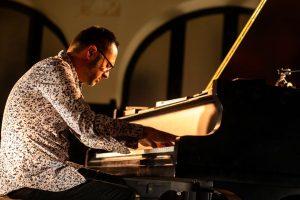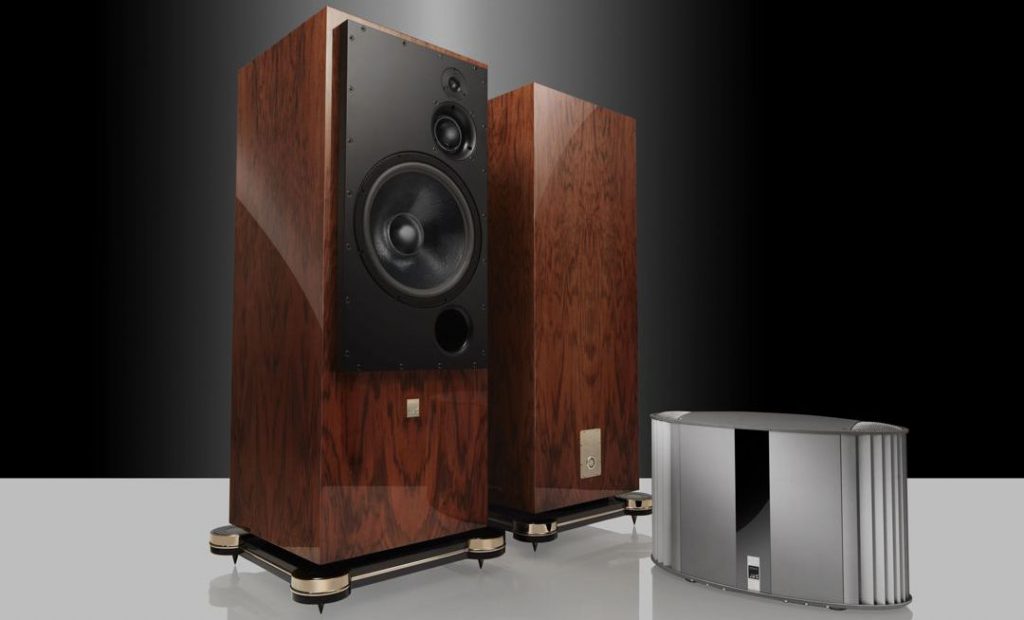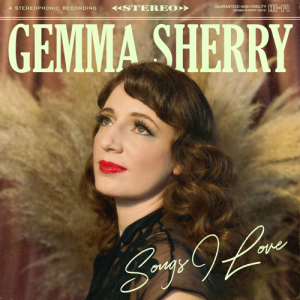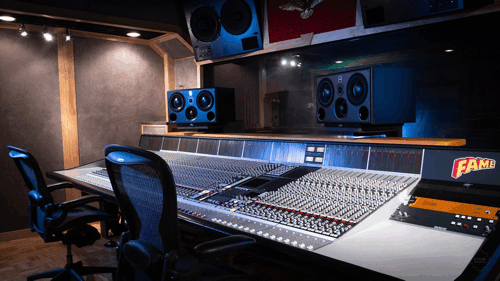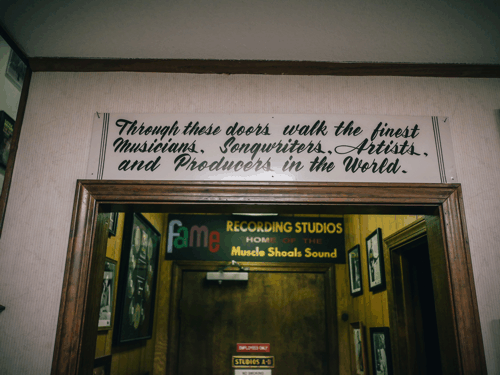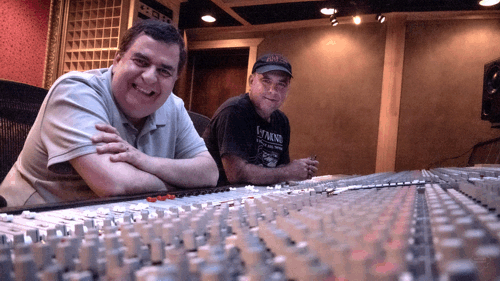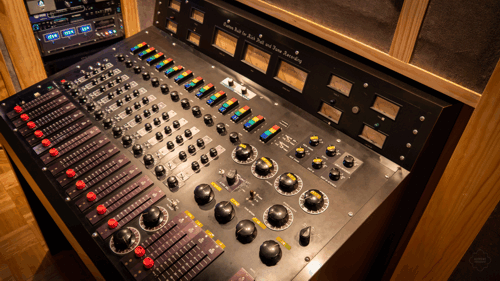Latest News
Artist Spotlight: Luke Howard
Australian Music Prize twice-long-listed composer Luke Howard has been described as “absolutely heavenly” (Mary Anne Hobbs, BBC Radio 6) and his music as “an ambient masterclass” (Musos’ Guide), but no words can fully capture the potency of Howard’s enthralling compositions. A pianist since childhood, Howard has scored films and performed with artists as diverse as Lior and Jeff Mills, capturing audiences with contemporary classical arrangements that curl and twist around the boundaries of a particular emotion. Though wordless, Howard’s songs perform a function unique to music as a medium – that of evoking without describing, bringing listeners to a feeling which defies articulating.
Back home in Melbourne, Howard recently composed music for the short film The Sand That Ate The Sea (nominated for best soundtrack in the 2019 ARIA Awards) and the theatre work The Shadow Whose Prey the Hunter Becomes (Back To Back Theatre). He has worked with choreographer, Juliano Nunes on pieces for the Royal Ballet in Covent Garden, and the Atlanta Ballet.
Howard is one of Australia’s foremost practitioners of contemporary classical music whose work continues to captivate audiences worldwide.
ATC caught up with Luke back in May, to find out a little more about how it all began, how he works in the studio and his experiences playing live….
ATC: Can you tell us a little about how your background and how your career in music began?
L.H: It’s probably not an uncommon story – I learned piano as a child at my parent’s suggestion – and I’ve just kept going. I suspect persistence is likely the real secret to a career in the arts. Of course, the story is a bit more nuanced: I studied jazz and improvisation at university as I enjoyed making things up, and didn’t have the technique nor repertoire to be a concert pianist. Much of my twenties and some of my thirties I oscillated between being a jobbing jazz pianist and a software developer, but in the past few years I’ve focused mostly on composition. I miss playing the piano as much as I used to, but I feel I can address bigger ideas, instrumentation, etc. as a composer. In a way, I’m just chasing the sentiment I first felt when I heard, say, Keith Jarrett. Trying to recreate that.
 ATC: ATC’s founder, Chairman and fellow Australian, Billy Woodman has a great passion for jazz and has played piano from an early age, even covering the cost of his journey from Australia to England by backing a singer onboard the boat that he travelled on. One of his great influences, and all-time favourite pianists is the late great, Bill Evans. Which musicians have had a strong influence on you and your music?
ATC: ATC’s founder, Chairman and fellow Australian, Billy Woodman has a great passion for jazz and has played piano from an early age, even covering the cost of his journey from Australia to England by backing a singer onboard the boat that he travelled on. One of his great influences, and all-time favourite pianists is the late great, Bill Evans. Which musicians have had a strong influence on you and your music?
L.H: Well, Bill Evans of course is an influence, but I think in my study of jazz piano I looked both before and after – I transcribed many Bud Powell solos, and then spent a good few years on a diet of Keith Jarrett and Brad Mehldau. They really define the language of modern jazz piano. The sadly departed pianists Lyle Mays and John Taylor were also huge influences, and aesthetically much more aligned with the music I make today. This of course is just a very narrow jazz piano lens – there’s much more music I love, including the artists I’ve mentioned so far, along with Philip Glass, Nico Muhly, Ryuichi Sakamoto, The Blue Nile, I could go on for days…
ATC: Piano is your primary instrument, but do you have any other instruments you are particularly fond of, both acoustic and electronic?
L.H: I am fond of many instruments, but I can’t play any of them save the piano (I’m pretty sure I’ve forgotten how to play the French Horn and oboe by now). I have a small cadre (which Google informs me is actually a tautology) of musicians I use on almost every record: effectively a jazz rhythm section, with guitar and violin, but used in more creative ways. So I love those textures. And, really, string orchestra is still my favourite ‘instrument’ for its emotional depth. I do look forward to the time when it will be possible to record with one again.
ATC: You incorporate electronic instruments and programming in your compositions. Is this an area of music you have been interested in for a long time or, a more recent development?
L.H: I’m a definite nerd but I’ve usually kept the two worlds fairly separate. I have been using synthesisers since I was a high school student thanks to some particularly forward-looking education programs in Australia (electronic music was offered as instrumental subject at my school). I’ve been reading audio magazines since approximately 1987 when my Dad bought me an issue of the now defunct Music Technology! As a jazz musician I didn’t listen to a whole heap of electronic music until recently, but I have been particularly inspired by how artists such as Nils Frahm, Jon Hopkins, Jóhann Jóhannsson, Max Richter, et al. have integrated acoustic and electronic elements.
ATC: Could you give us an overview of your studio setup?
L.H: I work mostly ‘in the box’, I have a few nice bits of outboard but beyond the things necessary to actually get the music into the computer in the first place, that doesn’t see a great deal of use. So what really matters are the room and the speakers. My room was designed by Adelaide acoustician Chris Morton. I have a very beautiful desk (of the non-mixing sort) designed by my friend, Thomas Jouanjean of Northward Acoustics. My speakers are a pair of ATC SCM50ASLs (fed by a Cranesong Solaris DAC), which to me are a perfect combination of musicality and truthfulness; not fatiguing to listen to for long periods, not flattering, but also not so clinical one doesn’t feel inspired. My piano is a Yamaha upright, nothing particularly extraordinary but one which records quite well. I’m a bit of a collector of reverbs and tape delays, too.
 ATC: When you are in the studio, do you have a pretty structured process you like to follow when recording and do you have a favorite place to record?
ATC: When you are in the studio, do you have a pretty structured process you like to follow when recording and do you have a favorite place to record?
L.H: I do a lot of recording at my own studio now, so I tend to record rough ideas on the piano, then work and edit them in the computer, and then re-record them if the original version wasn’t up to scratch. It depends on the piece: an orchestral piece might start as an improvisation on the piano or the computer, but most of the work will be done in notation, and it doesn’t really exist in a tangible form until it’s been performed. Other pieces I’ve improvised on the piano have ended up on the record with very little editing.
Regarding a favourite place to record: I loved recording at Rainbow Studio in Oslo when Jan Erik Kongshaug was alive…but it wouldn’t be the same without him. Again, it really depends on the composition, but I learned the lesson early that acoustic instruments need good rooms, and it’s a lot easier to bring recording equipment to a great sounding room, than a good acoustic to a poor studio. High land prices have forced the closure of many studios here and elsewhere, so nowadays we are usually recording ensembles in a concert venue, and solo instruments in smaller spaces. One of my favourite released albums, Ten Sails, was recorded in a Berlin apartment. Good music recorded in a less than ideal room will always trump the converse, but great music in a great room is ideal!
ATC: Are there any technologies that have had a particularly strong influence on your ‘sound’?
L.H: Most of the music I make has an acoustic genesis, using instruments which haven’t changed for hundreds of years. I am fond of treating sounds using delays, reverbs, etc. but I’m fairly certain I’m using exactly the same tools as everyone else, and I arrived at a ‘sound’ simply through experimenting with them. I love a beautifully recorded Steinway just as much as an upright piano with some felt draped between the hammers and strings (I’ve actually been using a distinctly Australian cleaning cloth – Chux – as a replacement for felt of late!). I did buy a Prophet 6 synth a couple of years ago, which I’m slowly getting to know, so you might hear more of that on the next album.
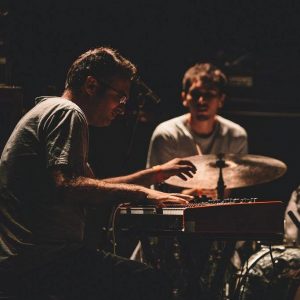 ATC: I read that you performed live as part of the Melbourne Symphony Orchestra alongside iconic techno artists Jeff Mills and Derrick May. On paper, an unlikely musical combination! but can tell us a little about how that came about and the experience?
ATC: I read that you performed live as part of the Melbourne Symphony Orchestra alongside iconic techno artists Jeff Mills and Derrick May. On paper, an unlikely musical combination! but can tell us a little about how that came about and the experience?
L.H: Well, my name must be somewhere on a list of casual musicians as the Melbourne Symphony calls me occasionally when they need someone who can both read music and improvise. It was an interesting gig, certainly a lot of fun but the nature of amplifying an orchestra means that I couldn’t hear what Jeff and Derrick were doing too clearly. I do have a good story from that gig though, which might also explain why I haven’t heard from them since: I had a long solo feature just before the final song Strings of Life, and as I took a bow for this, my earpiece (with the click track) fell out. By the time I got it back in, I didn’t know where in the bar I was, let alone which bar! It was a pretty excruciating moment in front of many thousands of people – suffice to say when the gig ended I snuck away very quietly. To this day I’m not sure if anyone in the audience noticed, but the conductor certainly did!
ATC: Many people have had more time on their hands the past few months and are listing to more music and/or are looking for new artists and sounds to explore. Can you recommend three artists or albums that you have been enjoying recently?
L.H: I often go back to Talk Talk’s Spirit of Eden. It’s a perfect record. Keaton Henson’s Six Lethargies is a beauty. Other favourite artists to check out that your readers may not have heard of are Bing & Ruth, Ben Lukas Boysen, Marty Hicks and Hania Rani.
Quick plug! – a new live record of solo piano music, All That Is Not Solid, releases 30th July on Mercury KX (Decca/Universal). It was recorded in January this year, at the height of the Victoria bushfires. Listen to the track Passions of All Kinds here. I also recently released a book of sheet music which is available here.
Luke Howard: Website – Instagram – Facebook – Spotify – Tidal – Qobuz
PRODUCT LAUNCH: SCM150ASLT LE
New Limited Edition SCM150ASLT LE Active Loudspeaker System
Limited edition system brings exceptional focus to a 45-year heritage of innovation and precision engineering…
ATC loudspeaker Technology is proud to announce the availability of the SCM150ASLT, a luxurious marriage of world-class transducer and electronic design engineering, conceived to deliver extraordinary levels of clarity, neutrality, transient response and effortless power delivery.
The 3-way system comprises flawlessly engineered SCM150ASLT speaker towers incorporating the latest ATC designed and built drive unit technology, combined with an ATC P6 power amplifier. SCM150ASLT drivers including the new 25mm neodymium soft dome SH25-76S super dome tweeter, the 75mm soft dome SM75-150S super dome midrange and the SB75-375SL super linear bass driver are driven directly by the six dedicated channels of the P6 dual-mono, 3-way power amplifier, housed in an elliptical billet aluminium chassis, exquisitely machined and finished to complement the impeccable quality of the cabinets.
Manufactured to the highest standard by ATC’s own cabinet makers, weighing 116kg and at approximately 1.4m tall, each speaker enclosure is finished in selected European crown-cut walnut veneer with a high-gloss polyester lacquer, and detailed with a stainless steel badge, input panel and bespoke limited edition plinth, PVD treated to create an exclusive nickel-like appearance.
SCM150ASLT Speaker
Deploying proprietary drivers throughout, the 3-way system uses ATC’s new SH25-76S tweeter, featuring both upper and lower suspension for greater operational precision and lower distortion; the latest evolution of ATC’s signature soft dome midrange design, the SM75-150S, and the company’s low-distortion SB75-375SL Super Linear bass driver. Combined they deliver a response accuracy of ±2dB between 60Hz-17kHz and ±6dB from 25Hz to 22kHz across a wide horizontal dispersion and at a maximum SPL of 117dB. The rear-mounted input panel features a single LEMO aerospace-grade 10-pin connector.
P6 Power Amplifier
The P6 is a high-performance Class AB dual-mono power amplifier designed and built by ATC to provide dedicated amplification and optimally matched active crossovers for the SCM150ASLT. It features a total of 6 channels: 2x (200W LF, 100W MF, 50W HF) for a combined output power of 350W/side. Generating a signal-to-noise ratio of more than 105 decibels its ultra-low noise discrete design, paired with 3-way active crossovers with phase equalisation, offers clear and detailed audio reproduction. On the rear panel, professional L/R XLR inputs (from preamplifier/digital source) are joined by aerospace-grade LEMO multi-pin loudspeaker output connectors. Proprietary speaker cables are included with the system.
As is customary with ATC products the SCM150ASLT and P6 are covered by a six-year warranty.
Available to order immediately. Product built to order, earliest shipping Wednesday August 5th.
Recommended UK retail price is £46,600 inc VAT. If you are located outside the UK, please contact the dealer or distributor in your region for pricing. A list of ATC authorised dealers and distributors can be found here.
Further product details can be found on the SCM150ASLT LE webpage.
SCM7 Reviewed by Hi-Fi Critic
Our most compact and affordable loudspeaker, the SCM7 has been reviewed by Martin Colloms, writing for Hi-Fi Critic magazine.
“This is a remarkable loudspeaker on several grounds. Firstly build quality and finish are excellent. Then comes the monitor grade accuracy, excellent pair matching and the remarkable bass for the size, and then the low distortion. It sounds musical and entertaining and was a delight to review. Within the natural limitation of size it really is of musically revealing monitor quality.”
Martin Colloms, Hi-Fi Critic, June 2020
To read the review in full, download the PDF HERE.
Hit Producer Fraser T. Smith Monitors with ATC
Producer, Songwriter and Musician, Fraser T. Smith has upgraded the monitoring at his Buckinghamshire studio with the addition of a pair of ATC SCM110ASL Pro 3-way monitors, and complimentary ATC 15″ subwoofer.
Smith’s career in music began in the 90s as a guitarist, before progressing to be an in-demand session player and eventually into a role focused on production and writing. Since then he has worked with or written for Adele, Sam Smith, Kano, Ellie Goulding and Stormzy to name but a few.
Discussing the new monitoring system, which was supplied as part of a larger studio upgrade by Kazbar Systems and Studiocare, “Designing my new studio, I wanted a pair of main monitors which could deliver punch, excitement, and low-end vibe for production and tracking, whilst still retaining absolute accuracy for mixing and critical listening. I tried a lot of options, and the ATC SCM110’s we’re far and away the most perfect. I couldn’t be happier.“
Smith has co-written, mixed and produced 7 Number One singles in the UK, 2 Billboard Number One singles in the US, and contributed to 18 Number 1 albums, collecting Grammy and Ivor Novello awards along the way. Most recently, he achieved great success in 2019 with UK rapper, Dave, co-exec. producing his debut album, ‘Psychodrama’. The album went to Number 1 on the UK Albums Chart, received widespread acclaim from critics and won the 2019 Mercury Prize.
Wikipedia – Instagram – Twitter
ATC SCM100SE Wins Hi-Fi+ Editors Choice Award 2020
Our SCM100Se active loudspeaker has won a much coveted Hi-Fi+ Editors Choice Award.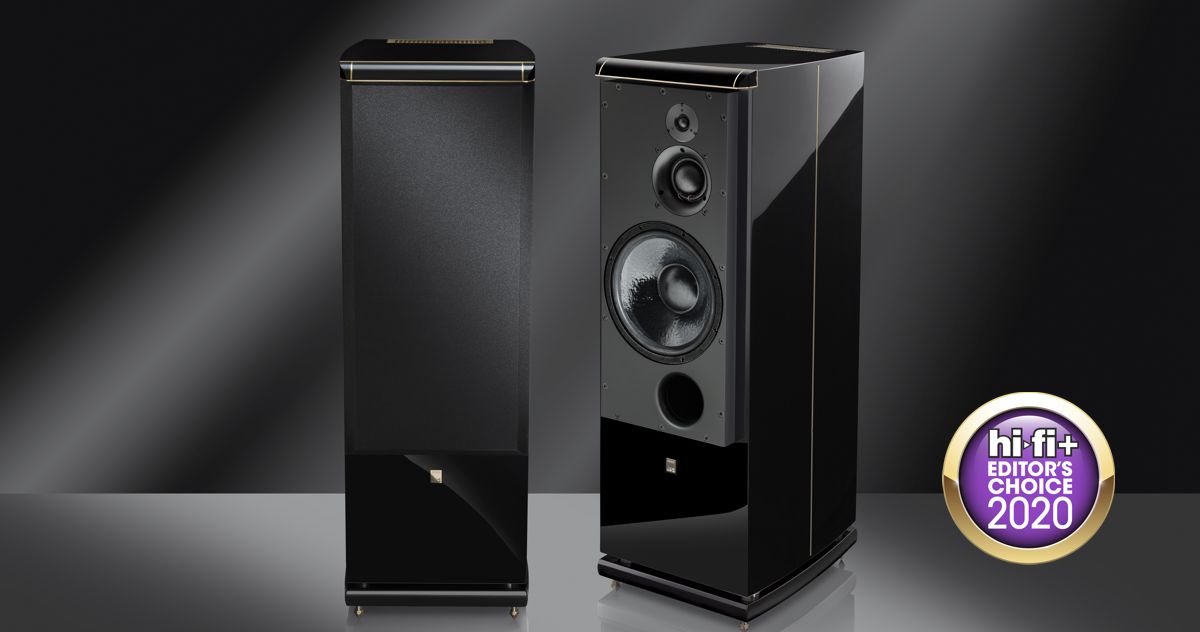
Read the write up from the Awards Issue of the magazine in this PDF. Alternatively, read the detailed review from last year here in this PDF.
The 2020 Hi-Fi+ Awards Issue is available now. Please visit the Hi-Fi+ Website for details.
SIA2-100 & SCM7 System Review – Stereonet
ATC most compact and affordable system comprising SCM7 loudspeakers and SIA2-100 Integrated Amplifier have been given a glowing review by Jay Garrett, writing for online publication Stereonet.
Concluding, Jay writes, “…you will be treated to textured low-frequencies delivered with conviction and realism, a midband of clarity and focus, and smooth yet mustard-keen tweeter. Overall then, whether you choose this system because of its size, build-quality, performance, and/or country of origin, you’ll not regret auditioning it one bit. Catch it if you can.”
Jay Garrett, Stereonet, March 2020
You can read the review in full via the Stereonet Website
New Album Release – Gemma Sherry ‘Songs I Love’ – Featuring Billy Woodman
In music, timing is everything. The same could be said about the making of the album “Songs I Love”. ATC founder, Billy Woodman, an accomplished pianist and arranger, originally from Australia knew his relative, Gemma Sherry was into Jazz but it wasn’t until recently that their musical lives coincided.
In his early 20’s Billy made his way to England from Australia as a pianist on a cruise ship. This was followed by many years of touring and performing with some of the biggest name vocalists in England. Gemma, who is from a small town in outback Australia, started off playing saxophone in numerous jazz bands. After being accepted into music school she moved to New York City to study Jazz singing.
Gemma and Billy’s first musical encounter was when she was a teenager and during one of Billy’s trips back to Australia to visit his family, however it would be another 10 years before they began discussing the idea of making an album together. The original concept was to capture all of the musical talent in the family by including Gemma’s brother Jacob Sherry, an accomplished bassist. However with the family split between Australia, the U.S. and the U.K. this was very difficult and it wasn’t until 2019 that Gemma was able to sit down with Billy and bass player, Mike Waite to record a full album at Yellow Shark Recording Studios in Cheltenham, England, with none other than award winning New Zealand born engineer Clint Murphy behind the mixing desk.
This inspiration for this album was to showcase some of the most beautiful jazz songs that have ever been written. Billy & Gemma both have the same approach in that they believe the songs should be allowed to speak for themselves. It’s the subtlety in the music that shines and you can hear that from both Billy’s playing and Gemma’s singing. Their treatment of the melody and chords is with care and thought. Billy’s arrangement of all the songs shows his deep love for piano voicings and getting them, ‘just right’. He is an absolute perfectionist and you can hear that. Even if you didn’t know they were related, it’s hard to miss the effortless musical connection between Billy and Gemma as you listen to the album. There is such an understanding between the both of them. It also helped that Billy and Mike Waite have been playing together for over 20 years, having weekly jam sessions and rehearsals.
With a wide range of influences including legends such as Bill Evans, Kenny Barron, Blossom Dearie and Astrud Gilberto, the album ”Songs I Love” is a treasure.
The album was mastered by Ryan Smith at the new Sterling Sound facility in Nashville, TN, USA who employ ATC monitoring throughout their new facilities.
The album is available now from Gemma’s Bandcamp page. If you would like information on upcoming gigs, please visit www.gemmasherry.com
Clint Murphy Productions. Yellow Shark Studios. Sterling Sound Mastering.
MUSCLE SHOALS LEGENDARY FAME STUDIOS REVITALIZES STUDIO B STARTING WITH ATC MONITORS
MUSCLE SHOALS, ALABAMA – OCTOBER 2019: Built in the 1960s by Rick Hall, FAME Studios in Muscle Shoals, Alabama was the first and most prominent studio to curate the Muscle Shoals Sound, a unique and ultimately ineffable combination of country, gospel, rock, and soul. Listed in the U.S. National Register of Historic Places. FAME Studios recorded hits by Aretha Franklin, Clarence Carter, Otis Redding, Wilson Pickett, Gregg Allman, and countless others who shaped the face of modern music. It has been in continuous service since it opened, with modern recordings by Jason Isbell, Blind Boys of Alabama, Alison Krauss, The Revialists, Keb Mo’, Demi Lovato, Steven Tyler, the Raconteurs, and Alicia Keys. FAME operations are handled by Rodney Hall, who recently teamed up with Grammy Award-winning producer and engineer Glenn Rosenstein to revitalize the control room of FAME Studio B (paired with a live room that Rosenstein considers one the best in the world) with structural changes, new equipment, and a pair of ATC SCM45A monitors.
“I was deeply influenced by the music that came out of Muscle Shoals,” recalled Rosenstein, who has worked with U2, George Clinton, The Ramones, Madonna, James Brown, Talking Heads, and others. “So, I was thrilled in the mid-1980s to get a call from the late Muscle Shoals Rhythm Section member Jimmy Johnson. He was producing an album for Lynyrd Skynyrd and asked if I would mix. We finished that project and shortly thereafter teamed up on Gary Rossington’s solo album, which cemented our friendship. We worked together over the past thirty-plus years, and recently I started spending more time in the Shoals area. When I needed to track drums or do other ‘big studio’ tasks, I went to FAME Studios and fell in love with the live room in Studio B.”
Rick Hall built Studio B in 1967 due to the overwhelming demand for Studio A. Early incarnations of what would become The Allman Brothers Band put Studio B through its paces immediately after its completion. During large Studio A sessions, Rick would record the horn arrangements in Studio B while other elements were recorded in Studio A. Hits recorded in Studio B include “Hey Joe” by Wilson Pickett, “Greenwood Mississippi” by Little Richard, “I Loved Her First” by Heartland, Sirens Of The Ditch album by Jason Isbell and Dirty South album by the Drive By Truckers. Studio B also hosted Jimi Hendrix, who recorded the song “Mojo Man” there. The song was released a year ago as part of the Jimi Hendrix People, Angels & Hell retrospective project.
In an illustrious career spanning nearly four decades, Rosenstein has worked in almost every major recording studio in the country. “FAME’s Studio B is one of the finest live rooms anywhere,” he said. “I discovered this about a year-and-a-half ago, when I was cutting vocals in B with Whitney Woerz for my record label, 600 Volt/Sony. Rodney [Hall] dropped in, I told him I was getting some of the best vocal sounds I had ever heard, despite the fact that the control room equipment was average. How was this gem of a studio not being used more frequently?”
Despite the fact that Rosenstein has a studio in Nashville and two home studios near Muscle Shoals, he felt compelled to partner with Rodney Hall & FAME to help bring Studio B to the glory it deserved. “The control room was small and needed to be refreshed,” he said. “Its original UA console had been loaned to the Alabama Music Hall of Fame, and there was a control surface in its place. The next thing I knew, Rodney and I were pulling down walls to expand the size of the control room. We contacted Paul Savasta at Odyssey Pro Sound to broker our console purchase – he found us Stevie Ray Vaughan’s SSL 6000 E Series. We are in the process of restoring the original UA console to serve as a side car. Most importantly, we didn’t touch the live room”
He continued, “It was like archeology, pulling off walls that had been built on top of walls. Many of the surfaces hadn’t been exposed in over fifty years. There were a lot of smart design elements that we used to our advantage, and the room now competes with the best of modern acoustic design.” Rodney Hall added, “I’ve had people ask, ‘what would your dad think of this renovation?’ I’m sure he’d love it! He was always changing things, always updating equipment and aesthetics. We even outfitted a private lounge attached to the control room that had previously been a tape vault. So, it’s got a really cool vibe. You can hang out in there with the Otis Redding masters.”
The choice of ATC SCM45A monitors was not a difficult one for the team. “I’ve used virtually every high-end monitor available, and ATCs always speak to me,” Rosenstein said. “In this room, we’re treading lightly on the shoulders of greatness – if we’re going to equip the studio with the kind of gear that represents that kind of legacy, then ATC was a natural choice. I know that ATCs are an amazing draw that make a clear statement about the caliber of this room. Moreover, we were careful not to pigeonhole Studio B in any particular genre. We wanted a fully-modern room capable of delivering on the Muscle Shoals sound, sure, but also on anything else – EDM, pop, country, you name it. ATCs cut across genres because they reveal a true picture of the work.”
He concluded, “To go from a young fan of the Muscle Shoals sound… to now having some partnership in its most iconic studio… I never would have guessed that would be possible. But here we are, and here we go!”
ATC products are distributed in the U.S.A. by Transaudio Group.
NAMM SPECIAL: EXPERIENCE DOLBY ATMOS MUSIC WITH TRANSAUDIO & ATC
LAS VEGAS, NEVADA – JANUARY 2020: TransAudio Group, U.S. distributor of ATC and a full line of high-end professional recording equipment, will show a Dolby Atmos Music playback system at Winter NAMM 2020 in Booth #14914. This will be a smaller version of its wildly successful Summer NAMM 2019 Dolby Atmos Music demo held at Blackbird Studios, Nashville. Dolby Atmos Music is a next-generation immersive audio experience that takes music far beyond traditional “surround” that includes 3-D spatial information to bring the listener into the music itself. TransAudio Group has supplied Dolby with ATC loudspeakers applied to Atmos for its San Francisco Market Street headquarters and other multi-channel Dolby executive listening rooms. Now TransAudio will set up an all ATC monitor system at NAMM 2020 for visitors to experience Dolby Atmos Music for the first time. With support from Universal Music Group, Netflix, Amazon, and others, Atmos Music is poised to create a new standard in music playback for listeners around the world. The all ATC 7.1.4 Dolby Atmos Music system at Winter NAMM will also use a new, in-development product from Latch Lake Music, a free-standing, high speaker stand to support the eight to nine foot “height” speakers. This system is designed for Atmos Music playback, suitable for mixing, production, or a very high-end personal listening system.
In addition to the Dolby Atmos demo, TransAudio Group will also have a traditional stereo setup demonstrating ATC SCM25A and SCM45A monitors.
AirHush acoustic isolation panels will form the 350 square-foot demo room with nine-foot walls, and TransAudio Group will take groups of attendees in for a prepared demo experience. Three ATC SCM110ASL monitors will comprise the front LCR channels, four ATC SCM25A monitors will comprise the side/surround channels, and four ATC SCM12i monitors will comprise the overhead height channels. Two ATC SCM0.1/15SL 15-inch subwoofers will handle the LFE channel. One of the current challenges in a Dolby Atmos or other multichannel music production system is that the overhead height speakers need to be installed or mounted. To overcome this, TransAudio Group worked with Latch Lake to develop a prototype free-standing speaker stand for the overhead height channel SCM12i speakers.
“Very few people have had a chance to hear music specifically mixed for Dolby Atmos or other multi-channel immersive formats, much less at the high resolution we achieve with ATC monitors,” said Brad Lunde, founder and president of TransAudio Group. “We’re excited to provide this new and unique experience for visitors at NAMM, and we’re pleased that the setup will simultaneously demo AirHush sound isolation technology and portable, non-permanent ways of building multichannel systems using Latch Lake technology. Our ability to provide these smaller non-permanent systems will allow professionals and artists to work in Atmos and other formats much more easily than before.”
Demos at NAMM will be held on a first come, first serve basis.



